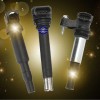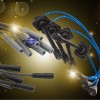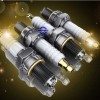
Quality Engine Parts products from JCA AUTO SUPPLY
Car Engine Parts Description
The engine is the heart of a vehicle, converting fuel into motion through a complex assembly of components. Each part plays a critical role in ensuring the engine operates efficiently and reliably. Here’s an overview of key car engine parts:
1. Engine Block
The engine block is the main structure of the engine, housing the cylinders, pistons, and crankshaft. It provides the necessary support and is typically made of cast iron or aluminum for durability and weight reduction.
2. Pistons
Pistons are cylindrical components that move up and down within the cylinders. They convert the energy from fuel combustion into mechanical energy, driving the crankshaft.
3. Crankshaft
The crankshaft is a long rod that converts the linear motion of the pistons into rotational motion, ultimately powering the vehicle’s wheels. It is critical for converting the engine's power into usable energy.
4. Camshaft
The camshaft controls the opening and closing of the engine's intake and exhaust valves. It synchronizes with the crankshaft, ensuring that valves open and close at the correct times during the combustion cycle.
5. Valves
Valves are crucial for allowing air and fuel into the combustion chamber and exhaust gases out. Intake valves let the air-fuel mixture in, while exhaust valves release combustion gases.
6. Timing Belt/Chain
This component connects the crankshaft and camshaft, ensuring they rotate in sync. It is essential for maintaining the proper timing of the engine's operation.
7. Fuel Injector
Fuel injectors deliver the precise amount of fuel into the combustion chamber. Modern engines use electronic fuel injection (EFI) systems for better fuel efficiency and performance.
8. Spark Plug
In gasoline engines, spark plugs ignite the air-fuel mixture within the cylinders. They create the spark needed for combustion, contributing to engine power and efficiency.
9. Oil Pan
The oil pan stores the engine oil, which lubricates moving parts, reduces friction, and helps cool the engine. It plays a vital role in maintaining engine health.
10. Exhaust Manifold
The exhaust manifold collects exhaust gases from the cylinders and directs them into the exhaust system. It helps reduce emissions and improve engine efficiency.
11. Intake Manifold
The intake manifold distributes the air-fuel mixture to the engine's cylinders. It plays a crucial role in optimizing engine performance and fuel efficiency.
12. Cooling System Components
- Radiator: Cools the engine by dissipating heat from the coolant.
- Water Pump: Circulates coolant throughout the engine to maintain optimal operating temperatures.
Conclusion
Each component of the car engine works in harmony to ensure efficient operation and performance. Regular maintenance and inspections of these parts are essential for the longevity and reliability of the engine, contributing to overall vehicle safety and efficiency.
-530x530.png)


